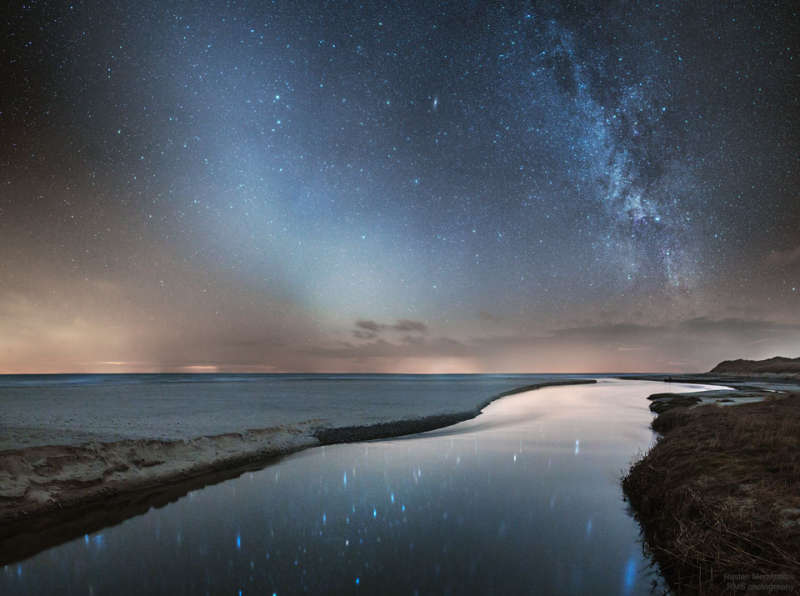Credit & Copyright: Ruslan Merzlyakov
(RMS Photography)
Explanation:
What are these two bands in the sky?
The more commonly seen band is the one on the right and is the central band of
our Milky Way galaxy.
Our Sun orbits in the disk of this
spiral galaxy, so that from inside, this disk
appears as a band of comparable brightness all the way
around the sky.
The Milky Way band
can also be seen all year -- if out
away
from city lights.
The less commonly seem band, on the left, is
zodiacal light --
sunlight reflected from dust orbiting the Sun in our Solar System.
Zodiacal light is brightest near the Sun and so is best
seen just before sunrise or just after sunset.
On some evenings in the north,
particularly during the months of March and April, this ribbon of
zodiacal light
can appear quite prominent after sunset.
It has recently been determined that
zodiacal dust was mostly expelled by comets that have passed
near Jupiter.
Only on certain times of the year will the two bands be seen side by side,
in parts of the sky, like this.
Here the two streaks of light appear like the continuation of the banks of the
Liver River into the sky.
The featured
panorama of consecutive exposures was recorded about three weeks ago in
North Jutland,
Denmark.
1999 2000 2001 2002 2003 2004 2005 2006 2007 2008 2009 2010 2011 2012 2013 2014 2015 2016 2017 2018 2019 2020 2021 2022 2023 2024 2025 |
Yanvar' Fevral' Mart Aprel' Mai Iyun' Iyul' Avgust Sentyabr' Oktyabr' Noyabr' Dekabr' |
NASA Web Site Statements, Warnings, and Disclaimers
NASA Official: Jay Norris. Specific rights apply.
A service of: LHEA at NASA / GSFC
& Michigan Tech. U.
|
Publikacii s klyuchevymi slovami:
Milky Way - zodiacal light - Mlechnyi Put' - zodiakal'nyi svet
Publikacii so slovami: Milky Way - zodiacal light - Mlechnyi Put' - zodiakal'nyi svet | |
Sm. takzhe:
Vse publikacii na tu zhe temu >> | |
